How To Grow and Scale Your Business Through The Power of Systems with David Jenyns
Time Stamps
00:44 – Guest Intro
02:02 – How David Jenyns started with SYSTEMology
04:22 – Why Implement Systems and Processes
07:28 – The process of implementing a system
12:01 – How does this apply to your own business?
14:09 – Can every business be systemized?
17:25 – The phases of implementing the system
22:17 – Software used to get through the hurdles
24:59 – The biggest mistakes people make when implementing systems
27:07 – Advice for the first time systemizers
28:59 – Parting words for systemizers
30:33 – Learn more about David Jenyns
Guest Intro
Ilana:
Welcome to Teach Traffic. My name is Ilana Wechsler. And today I am interviewing a very special guest. I’m really excited to chat to you and his name is David Jenyns. Did I get your name?
David Jenyns:
Yes, nailed it! Jenyns is always a tough one, because there’s a “y” in there, like…
Ilana:
y and two n’s, it’s confusing. Yeah. Anyway, I’m really excited to chat to you, David, because you have a book called SYSTEMology, which I have definitely had a really, really good look through and even implemented some of your worksheets.
So I wanted to invite you to have a chat all about your book, specifically, who it’s for, who it’s not for, why a business owner, or even an agency owner might think about implementing systems in your business, and all really that information that you cover in your book. So thank you so much for taking the time out of your day, we’re all really busy people.
So I really appreciate you taking the time. Before we kind of get stuck into the meat and potatoes of really what your book is about. Do you kind of want to give us a little bit of a background about you? And I’m always interested in people’s journey, like how you fell into this, like how did you get here.
How David Jenyns started with SYSTEMology
David Jenyns:
Systems have always been in my DNA. My dad was a systems engineer. And he got my brother and I following a thing called a sheet when we were really young, where we could basically earn points for doing different activities around the house, and then it would just equal how much pocket money we got. So like from day dot systems have been around for me. And then I’ve been involved in lots of different businesses, everything from a rock and roll clothing Music Store to importing different products to licensing out material to running the digital agency, which is probably what I was most well known for.
And in each of those businesses, to varying degrees, systems and processes was always around. Like when we did the Rock and Roll clothing music store. We were looking to franchise that store. And we needed a franchisor manual and a franchisee manual. And we went down that path.
But it was weird when I got to the digital agency, which is the one I got stuck in for the longest. I just thought that business was different, because I knew how to do all of the tech and I was keeping up to speed with the changes that were going on with Google and I understood things intimately. And I was involved with the front end of our marketing.
So I’m in the videos and I’m you know, in the social media, and so leads within associate my name with the brand and then want to talk to me so I’d really built that business around me and it ended up just trapping me in that business for way too long. Because I just thought this business can’t be systemized. You know, we’re a creative digital agency where Google’s updating the aggregate algorithms all the time, and if I didn’t put systems and processes in place, they’re gonna get outdated very quickly.
So I found I had a lot of this baggage that kept me trapped. And yeah, my journey was actually finding out that we were pregnant and then realizing I wanted to get off the tools and step out of the business. And then I really doubled down on this idea of systemization.
And then to get a long story short, realize that that’s my passion. It’s kind of teaching business owners to make that idea out of the operations to build something that’s more scalable, and something that works with key person independence.
Why Implement Systems and Processes
Ilana:
Yeah, that kind of leads me to my question of why somebody would really look to implement systems. It’s interesting that you say your early exposure to systems really set you up for this. I can speak for myself where I did not have that at all.
And actually, I came from a corporate background where the admin was obviously pretty Junior. I was pretty even below the systems that were implemented. So when I started my agency, it was a number of years before someone even said to me, you know, you need systems and processes.
I’m like, what are they, you know, like I that was the extent of my naivety and terms of, you know, as you say, the keypad person dependency. So for somebody who’s listening to this, who might not be aware of why you would implement systems do you kind of want to touch on really the power of them,
David Jenyns:
Yeah. You’re able to train up new team members and delegate down to free up your highest skilled team members, so they can work on only their highest value tasks. And oftentimes, it starts with the business owner, like we want to free up the business owners time to work on only the things that they can do, and delegate down tasks that, you know, could be easily followed with a checklist or a process and given to a more junior team member.
And it’s that leveling up that you do in business. And you do that. And as you create the systems and processes and reduce errors in the business, which helps to reduce waste, which makes you more efficient. It gives your key team members more time that they can then either reallocate back into the business and high value tasks, or if it’s a business owner who’s working too hard, gives them a chance to step out.
So that’s definitely some of the big reasons because it helps you to scale as you start to do that a lot of businesses, especially agencies, you see them hit this plateau when they’ve got certain team members who know how to do certain things really, really well. And then if they don’t come in the thing doesn’t get done until they come in.
Ilana:
Or they leave
David Jenyns:
Yeah, or they leave. Yeah, that’s right. I kind of feel like systems and processes in that way. It’s almost like business insurance, in which you pay the premium upfront to document your systems and your processes to capture the IP, in the unfortunate event that that great team member walks out the door and takes all of that great IP with them.
So business insurance is another reason that you would put systems and processes in place and it also helps to, if you ultimately sell one day, sometimes people are building it, let’s say an agency to sell. One of the key things that the acquirer will look for, is they want a low risk deal. And it’s a high risk if they purchase the business.
And all of the IP is trapped in the heads of key team members. And then what happens if they walk, then the value of their business significantly decreases? So by capturing those systems, that again, another way to make your business more valuable?
The process of implementing a system
Ilana:
Yep. Interesting. In the book, you kind of really, obviously touch on all those reasons that you said, you know, I guess, wasn’t it Michael Gerber, who famously said, you know, you’re working in your business, rather on your business, or work on your business, rather than in your business rather.
But, you know, do you mind kind of going through the various phases of how you implement the system? So say, one of our listeners goes, right, okay, I’m actually committing to doing this. And then I guess, I can only speak for myself as well, feeling quite overwhelmed in terms of lke where do you even start, you know, what systems do you start with Implementing?
So do you mind sort of touching on the process that you go through and implementing that?
David Jenyns:
There’s a handful of questions that bubble up for someone who’s already made the decision to do this. And the first one is usually where do I start just like you identified there. And I actually learned that we got a mutual friend in Mike Rhodes, and I used to share an office with him on Saint Kilda Road, and he was an EMyth consultant back in the day, and he loves systems and processes and went down this path of Systemising his new agency, it was really early days web savvy. And he went hog wild and systemized everything and literally had hundreds and hundreds of systems.
And through that exercise and working, you know, in his space, we realized that oftentimes, you can just apply the 80-20. And you figure out what are the key systems that you need to have done a certain way, and you start there first, don’t try and do everything.
You start off with the first 10 systems, or 15 systems. And you think, what are the ones that are really essential here, and I’ve got an exercise in the book called the critical client flow. I mean, you don’t need the book to do the exercise.
Basically, it’s just you map the linear journey that your prospect and your client goes through to deliver the core product or service. So you say, how do I grab their attention? How do I handle that incoming inquiry? How do I sell them? How do I take their money? How do I onboard them? How do I deliver? How do I get them to come back?
And oftentimes we start there, and we can even go a step further, and I’ll ask people in that critical client flow, where is the pain as in if you got 10 times as many clients or is there an area that you’re actively avoiding or an area that is all already causing significant troubles.
And things always seemed to go wrong here, start there, and just narrow in recognizing that just because you don’t systemize something, doesn’t mean it’s going to magically stop happening in your business, your businesses already kind of working, all we’re really looking at doing is optimizing certain scenarios, and systems and processes.
It’s all about capturing what is most probable. And then that way more junior team members, and less skilled team members can learn on what is most probable. And then anytime that something falls outside of most probable, that’s when it gets escalated to the more senior team member.
And that’s the way that new team members grow and learn. You want to say, well, here are the five systems related to your particular task. And if everything goes just right, and it’s blue skies, and it’s not raining, and the client says exactly what they need to, this is the path that you would follow.
And if it falls outside of that, then you can ask for help. And then we can talk about variations and what to do in those situations. And then they learn.
Well, that’s how I’ll handle that next time. And the decision can be made to adjust the system, or is the system find where it’s at? And that’s just part of on the job learning. So I suppose to answer the question, where do you start, you start by doing a critical client flow, and you identify those 10 to 15 systems around the delivery of a core product or service.
Because if you can have that deliver without key person dependency, it means the business can make money without key person dependency. And once you make money without key person dependency, you can actually solve just about any other problem in business.
Because the cash flow then helps you go, Well, I’ve got this other problem and I go hire a consultant or a team member or whatever. But I always feel like the first objective is, let’s make sure that the business can make money not being dependent on the business owner or anybody else for that matter.
Ilana:
Yeah, it’s funny, in reading your book, I sort of always had the lens of my own business in the background. How does this apply to my own business? So my own business, I actually got two but one is an agency like yours, instead of doing SEO, I manage, you know, ad campaigns for people.
And that has just for me been a really, really difficult business to systemize. Yes, the onboarding, that’s easy, right. But in terms of ongoing management of campaigns, there’s sort of nuances of language, there’s nuances of strategy that don’t really follow a formula per se for different clients. I guess Yeah. What advice would you give for a business that probably doesn’t fall into the cookie cutter? This is easily systemized because it just follows a template and a formula.
How does this apply to your own business?
David Jenyns:
I think first finding a product within your current offering that maybe could be systemized. I remember reading the book Built to Sell by John Warrillow. And he talks about the logo business and how you can create all the fancy logos and it’s all bespoke, but within there, there’s like maybe a kernel of, well, maybe it’s business cards, maybe it’s something and you can still offer the bespoke stuff to start with.
But finding something within your suite that can be systemized down to a great level is a great starting point. And maybe it’s claiming a Google Plus listing maybe it’s you know, setting up the…not Google Plus I was thinking Google My Business rather Google Plus is long truly gone shows you how long I’ve been out of the game, but the…
Ilana:
Google My Business is now even retired. It’s nothing new now. (laughs)
David Jenyns:
Yes, yeah. (laughs)
And maybe it’s, you know, setting up a new account. But I think trying to find a piece is a great first step. Because then you can at least start heading down this journey. And like you said, certain things like onboarding and invoicing.
Like if you really struggled to find what that core product is, the other thing you can do is systemize everything else around the creative. So you might still have your account managers that are highly skilled, run the accounts from the day to day and figure out the strategy and do certain parts of that.
But there might be a whole bunch of other things around the work that they do. That can be systemized, maybe it’s the weekly updating of the client what you’ve worked on. Maybe it’s the invoicing or maybe it’s every month we have a strategy call or and then there’s other parts of your business as well.
So sometimes the creative bit is one of the hardest bits to systemize. So doing everything else first is a great way to at least keep moving forward and then sometimes the path reveals itself.
Can every business be systemized?
Ilana:
Yeah. Do you believe that every business could be systemized?
David Jenyns:
Great question. And strangely, one I’ve not ever been asked about, I’d like to, like my instant gut feeling is, is yes. But some things may need to change. So maybe in their current format, it might not be.
But I mean, the whole purpose here is to evolve and change, like a business gets started. And the founder has an idea of what the problem is. And then they go out to solve that problem. And they go to work on it.
And they work closely with the clients and they make adjustments and they learn and they change. And things will just keep evolving. I think what happens is sometimes the business owner then gets stuck. Because then used to just solving all the problems and doing everything bespoke, but there’s a step that needs to happen.
At some point, you need to kind of break through to the next level, where you almost like, take everything that you’ve learned in the agency business and figure out what is the scalable, repeatable part of this potentially, that could be delivered without key person dependency in there. Otherwise, you just kind of get trapped.
Ilana:
You get a plateau.
David Jenyns:
Yeah. And then I mean, you look at some agency owners that, you know, depending on their trajectory, and how they’re growing, like, hiring great people, is one way to do it. And some of the high end agencies, they do that they just have really great people.
But there’s also downsides to that as well, like, there’s a huge payroll often that comes with that. And the scalability of it is challenging, because in client services, you know, for every handful of new clients, you get on board, you’re going to need a rep, to then be able to manage those. So that’s what makes it challenging to scale quickly.
Ilana:
Yeah, yeah. Do you want to touch on the various phases of implementing the system. So let’s assume that every business can be systemized? Yeah, do want to touch on those eight phases, or seven, or eight?
The phases of implementing the system
David Jenyns:
Seven. And we touched on the first one, which is this idea of we call it define, but it’s just figuring out the first 10 to 15 that you start with, then the next step assigned is then figuring out who currently knows how to do that thing well?
As in, we identified in the critical client flow that someone has to answer the phone and qualify those leads, Jenny does that really well. Okay, well, let’s put Jenny’s name down. And then let’s find out what Jenny’s doing.
So step number two is assigned. Step number three is then extracted, we need to meet with Jenny. And then we needed to get it out of her head. Now, this is a little bit counterintuitive. And this is more a systemology approach, which is we just capture what you’re currently doing, not what you would like to be doing.
So Jenny’s already answering the phone pretty well. So let’s just find out what she’s doing. Because oftentimes, tremendous winds can be gained just by bringing everybody up to that speed. And up to that standard.
So step number three is extract. And we often have some other little tricks, things like making it a two person job, you have someone who knows how to do the thing, and you have a separate person who is documenting the process. And then we move on to step number four, which is then we need to organize the knowledge. So once we’ve extracted the knowledge, well, that knowledge needs to live somewhere.
So we need a central location that everybody can access, that has our How to information, it just becomes like the brain of the business. That just explains how things are done. And then step number five is integrate. A lot of that has to do with just getting the team on board, because you can have great documentation, and it can be centrally stored.
But if no one’s using it or following it, then it’s not really worth it. So we just then start to think about how do we keep people accountable? How do we make sure that they know there are expectations outlined in these systems, and those systems relate to tasks that they’re doing? So it’s a bit about that piece in itself is actually quite a big one, because it’s all about building the right culture?
So this, as I said, it’s probably one of the hardest pieces because it comes down to building culture and changing culture in a team, especially if you’ve got a small team, or a certain number of team members that can be challenging because people get stuck in their way of doing things but you got to get over the hump.
That’s the hardest bit, get over the hump until the point at which are, this is how we do things here. And once new team members know that existing team members’ things get easier.
And then step number six is scale that has to do with what are all of the other systems required to grow and scale your business. So it might be recruiting, on-boarding, managing staff, finance systems, management systems. And so a lot of the things that weren’t necessarily identified in the critical client flow, we still apply the 80-20. But it’s almost like we do it department by department.
And then the last step is optimize. Once you’ve captured what we call Minimum Viable systems, that’s kind of like your base level, you’ve got the minimum number of systems required, and it touches all aspects of the business. So every department, you’ve got a handful of systems, it’s still applying the 80 20. But there’s a handful in each, then what you want to start to do is just listen to your systems or listen to your business and go when something goes wrong. How do you identify that it’s gone wrong? Get it onto some sort of discussion list? And then systematically think, how could this be solved at the system level?
Like, this is a recurring issue that keeps popping up? What can we now put a system in place to fix that, and it feels a little bit like whack a mole at the start, you’re just kind of solving a problem, but we’re doing it in a systems manner, which means we solve it once. And then we can move on to the next highest quality problem.
And then you just find over time, the small little niggling problems, start disappearing peering. And then you then start to solve higher quality problems, which is really where a business owner should be working, not the same problem that you’ve solved 10 times before this week, like you want to think about, what is the highest value problem that you can be solving?
Ilana:
Yeah, definitely. You mentioned that step four, which is sort of the Organize phase, I would imagine, and maybe that’s just myself, that getting stuck on the tools of what tool to use, or what software to use to store all these systems is often a hurdle for people. Is there a certain software that you recommend? Or does it kind of really not matter? Just interested in your thoughts on that?
Software used to get through the hurdles for people
David Jenyns:
Yeah, look, a lot of people just get started out with something like Google Drive. I mean, it’s better than nothing. And it depends on the size of your team, like it’s a great place to start. I mean, I’m a little bit biased, like I’m, we’ve got a platform called system hub. And that solves that problem and does it in a very simple manner. I think that’s the real key, you just want systems and processes at the best of times has friction, and getting team members to follow it.
So you just really you’re not looking for features. You’re looking for real simplicity. And it’s just about organizing that knowledge centrally. So I mean, the default answer is system hub, or Google Drive, depending on where you’re at in the size of your team.
But I wouldn’t overthink it. And the other thing I try and suggest people do is avoid blurring the lines between project management and SOP like systems and process management because it’s two quite different things.
Like there’s project management is who does what, by when, whereas your systems management, like the How to information is, yeah, how tasks are done. So you want to then have a link to a process that you can then attach to a task that you assign out of your project management platform.
Ilana:
Got it? Yeah, no. So it was like, ideally, the question rather than me guessing, but I would imagine that you’d want a software that combines your project management with your system management, or do you think they can actually be two completely different systems,
David Jenyns:
I, my preference is to have them separate. And for a couple of reasons. One, you’re more likely to move and change project management platforms over time. And as you grow and scale, certain departments might be using different things to assign out tasks.
Whereas I still want all of the knowledge in one location. And I think keeping it separate makes it really easy. If you’re changing tools and moving from one thing to the other. Or if you end up packaging it up and selling it. Sometimes the acquiring business might have their own project management tools or whatever.
So having it separate, you just go here is everything about how we do how we do it. That’s generally my preference. That said though, there are some tools that are getting better and better at it.
But I have seen a couple of times where it’s gone pear shaped at the other end, and they’ve just had to cut and paste systems and processes out of the project management platform. And that in itself becomes quite a tedious process.
The biggest mistakes people make when implementing systems
Ilana:
Yeah, right. Interesting. What are some of the biggest mistakes that you see people make when implementing systems?
David Jenyns:
I think one of the ways that they introduce it to their team often undermines the success that they have with the team members. And that’s that really position it about that I probably frame why they’re looking, they’re looking they’re looking, they’re looking members just think this is they’re looking to replace me or, you know, I’m, I’m worried that you’re going to be offshoring my job, and they don’t quite position it that hang on, this makes your work easier, it gets everybody on the same page, it means you can take a holiday.
And when you come back, you don’t have 600 emails that you have to work through, because when you’ve got leave, another team member can step in and take over it. So I definitely feel like the way that it’s introduced to the team is one of the biggest mistakes that business owners make.
And then often also, like overcomplicating things, where they have a picture in their head of what they think a system or a process is, maybe they’ve heard about McDonald’s, or Amazon or Google or one of these big companies that have a lot of process in place. And they think, oh, that’s what a system is. And then they try and bring that to their small business. And it ends up being way overkill or not applicable.
Because, you know, in the case of McDonald’s, I see people, it’s like they’re trying to systemize, like McDonald’s, but they don’t run a hamburger shop, they are not recruiting 15 year old kids off the street and trying to train them up on how to make fries.
They’re maybe running an agency, and they’ve got really smart team members who have a certain amount of skill. So trying to follow the same approach as a hamburger business in your agency is equally going to lead to frustration and things not going right. Yeah,
Advice for the first time systemizers
Ilana:
Interesting. What about if you were starting, let’s say a new business now? Or even just a one person, one, one man band kind of thing? Would you if you’re the first time doing something, would you look to systemize it straightaway? Or would you kind of just not hold off until you’ve kind of got your way of doing things? I’m just curious. Yeah.
David Jenyns:
It’s almost like the level of detail in which you go into the systems and process. I think it’s always great from the leaders perspective, or the founder to start to stitch in systems thinking and systems culture from day number one. But we also don’t want to over create systems that are very quickly going to get out of date, because we’re still figuring things out.
And we’re going to change it next week. So what’s the point of doing a process now, so there’s a real fine line there. And I just think in the early days, you’re much better off doing high level checklists. And keeping things very simple. You still have a systems approach, but you don’t go.
This is exactly how we do things and down to super minut detail. And oftentimes it’s more just especially if it’s a solopreneur getting off the ground, it might just be them recording the way that they’re currently doing something. Maybe they record themselves three or four times the way that they issue an invoice.
And then by the time and assistant does come on board, then one of the first jobs for that virtual assistant might be well watch these three videos of me making an invoice and create a rough process off the back of that. Yeah. So yeah, we definitely need to go lighter on your documentation early on. Yeah. Yeah.
Parting words for systemizers
Ilana:
Very cool. I’m mindful of the time. So I don’t want to take up any more of your time. I guess one last question would be, you know, is there any sort of last minute advice for people that I kind of haven’t touched on that you think is worthy of them kind of understanding in order? I mean, obviously, I should read your book.
But yeah, any sort of parting thoughts that you’d give people about implementing such things?
David Jenyns:
Main thing is, if you feel like you’ve reached the conclusion that I’ve tried to systemize in the past, and it doesn’t work, or I’m not a system person, or that’s not going to work for me, because, like, I’m hoping that this discussion can maybe get you to retest some of those assumptions.
And maybe there’s a different approach applying something like systemology and taking some of the lessons of what we talked about today. I think, as long as we let that fire in someone to see think that this is possible for them and they will give it a go.
Because the difference between a systemized business versus a not systemized business, it’s night and day, like I’ve seen in hundreds of businesses. And when you compare the two side by side, once you actually get it, and you build a systems culture, it’s just a different way to operate.
And it reduces a lot of stress for you and your team. So I’m just hoping that yeah hearing what we talked about today. Get someone to go you know what, I’m gonna give this another crack.
Learn more about David Jenyns
Ilana:
Awesome. I hope so too. Where can people find out a little bit more information about you? Obviously, you’ve got your book systemology. But are there other kinds of ways that people get in contact with you?
David Jenyns:
Yeah, perfect. So I mean, if you’re listening to this, or watching this, head over to Audible, that’s a great place to get started with the book or Amazon just search systemology. And from there as well, we’ve got SYSTEMology.com.
And if you do need some extra help, whether that’s working with someone or going through a program, we talk a lot about that on SYSTEMology.com. And there’s links through to some of our social channels where we’d like to share some videos and helpful tips.
Ilana:
Awesome. Well, yeah, definitely. Check it out. Thank you so much for coming on. It’s been awesome chatting to you. And yeah, I love the work you do. Keep it up.
David Jenyns:
Pleasure, thank you!






